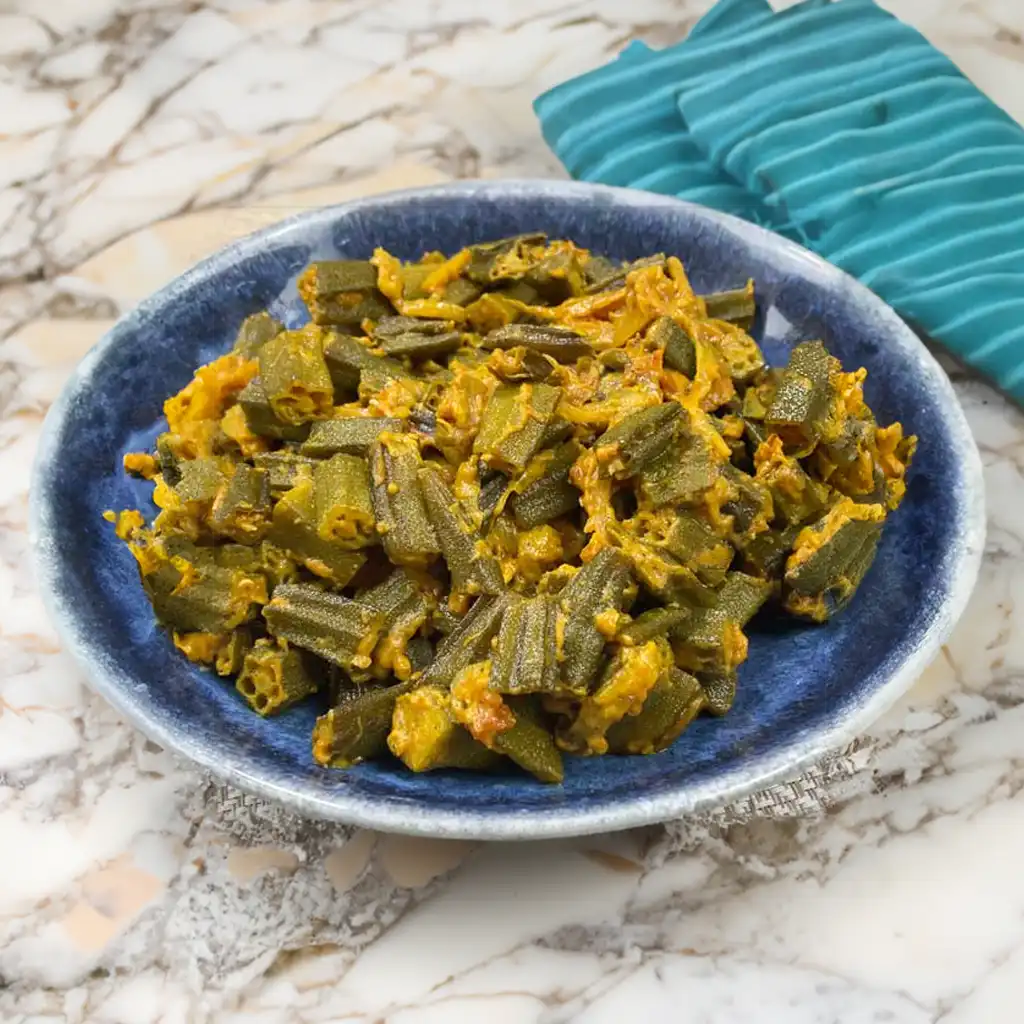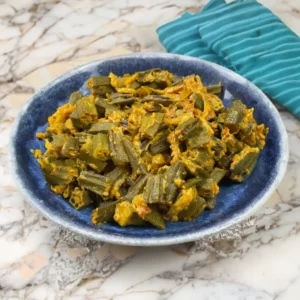
Bhindi masala is a flavorful and aromatic Indian dish that celebrates the earthy taste of okra, also known as bhindi.
Originating from the heart of Indian cuisine, this recipe offers a delightful blend of spices, creating a dish that’s both satisfying and comforting.
While it may seem daunting to cook up such a dish, fear not! With a few simple steps and some readily available ingredients, you’ll soon be whipping up a delicious bhindi masala right in your own kitchen.
This recipe is perfect for those looking to explore the rich flavors of Indian cooking without diving into overly complex techniques. With just a handful of ingredients and straightforward instructions, even beginners can achieve mouthwatering results.
Expert Tip: Be cautious when adding yoghurt to the hot pan to prevent curdling. Mix it in immediately and cook gently to avoid separation.
Okra (Bhindi): Okra adds a unique texture and flavor. It’s rich in dietary fiber and antioxidants, making it a healthy addition to your meal. When cooked properly, okra becomes tender and absorbs the spices beautifully, enhancing the overall taste of the dish.
Olive Oil: Olive oil is used for sautéing the aromatics and okra, imparting a subtle fruity flavor to the dish. It also helps to distribute the spices evenly and adds a hint of richness to the final dish.
Onions: Onions form the base of many Indian dishes, providing a sweet and savory flavor. When cooked down, they add depth and complexity to the bhindi masala.
Tomatoes: Tomatoes lend a tangy sweetness to the dish, balancing out the spices. They also contribute to the rich, thick gravy that coats the okra, enhancing its overall taste.
Garlic Paste and Ginger Paste: These aromatic ingredients add a punch of flavor to the dish. Garlic brings a pungent, slightly spicy taste, while ginger adds warmth and depth.
Salt: Salt is essential for seasoning the dish and bringing out the flavors of the other ingredients.
Chilli Powder: Chilli powder provides heat and spice to the bhindi masala, adding a kick to each bite. Adjust the amount according to your preference for spice level.
Turmeric Powder (Haldi): Turmeric powder not only adds a vibrant yellow color to the dish but also offers earthy undertones and mild bitterness. It’s also known for its anti-inflammatory properties.
Garam Masala: Garam masala is a blend of ground spices commonly used in Indian cuisine. It adds warmth, depth, and complexity to the dish, tying all the flavors together.
Yoghurt: Yoghurt adds creaminess and tanginess to the bhindi masala, balancing out the spices and adding a subtle richness to the gravy.
Expert Tip: Adjust the spice levels according to your preference by varying the amount of chilli powder used.
Expert Tip: Make sure to dry the okra thoroughly before chopping to minimize slime production during cooking.
To prevent okra from becoming slimy, make sure to thoroughly dry the okra before chopping it. Additionally, cooking the okra over high heat and avoiding overcrowding in the pan can help minimize slime production.
While fresh okra is ideal for this recipe, you can use frozen okra as a substitute if fresh is not available. Just make sure to thaw the frozen okra and pat it dry before using it in the recipe.
If you prefer not to use yoghurt, you can substitute it with coconut milk for a dairy-free option. Alternatively, you can omit the yoghurt altogether and adjust the other seasonings to taste.
Yes, you can make bhindi masala ahead of time and reheat it before serving. Store it in an airtight container in the refrigerator for up to 2-3 days. Reheat gently on the stovetop or in the microwave until heated through before serving.
The level of spiciness can be adjusted according to your preference by varying the amount of chilli powder used. Start with a smaller amount and add more to taste if desired. Additionally, you can deseed the chillies before adding them to the dish to reduce the heat level.
Here are some more recipes for you to enjoy! If you my recipes don’t forget to rate and leave a comment.
If you have any recipe suggestions, please do not hesitate to ask me. A great way to stay in contact with me is through Instagram, Facebook, Twitter and YouTube. Don’t forget to tag me @CookwithNabeela in your recipe photos!

Subscribe now to receive my latest recipes directly in your inbox. Stay up-to-date and never miss out!

I love to cook! I want to share with you my favourite, delicious family-friendly recipes. I want to inspire you to create fantastic food for your family every day.
Latest comments (1)
Hi, would you fry this first to get rid of the slime?